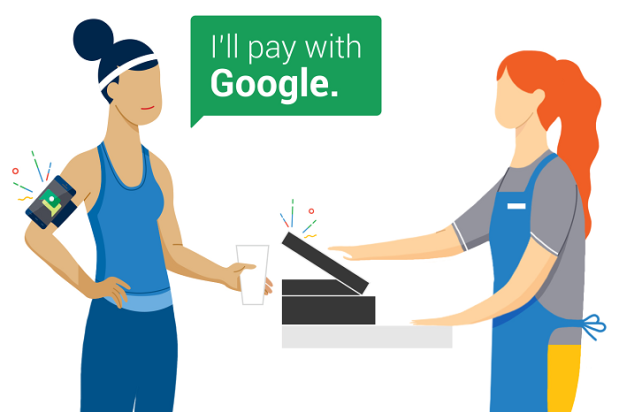Is Google’s Hands Free Too Convenient?

In the everlasting fight to remove any and all obstacles in the way of a consumer who wants to pull the trigger, each new mobile payments platform has tried to be more seamless and convenient than the last. Now that smartphones, smartwatches and IoT-enabled fashion accessories can all serve as suitable stand-ins for a card-stuffed wallet, has the industry hit a glass ceiling in terms of accessibility?
While the layman says yes, Google’s new Hands Free payment platform shouts back no.
Google announced Hands Free on Wednesday (March 2), though the payment method, which is distinct from Google’s extant Android Pay, isn’t just another digital wallet. It avoids the normal rules of mobile payments in that it doesn’t require users to swipe, tap or even take their phones out of their pockets. In an example of very appropriate names, Google simply wants people to stride up to checkout counters, declare that “I’m paying with Google” and stores outfitted with the proper technology will take care of the rest.
The technology incorporates a combination of facial recognition and Bluetooth and Wi-Fi signals to verify identities. Users download the Hands Free app on their phones and upload a picture of themselves, then stick their phones in a pocket, a bag or anywhere else; it’s not necessary to take devices out to pay. After users tell cashiers how they’d like to pay, the app senses if the store in question is equipped to handle Hands Free payments and sends the relevant data to the point-of-sale terminal. After the cashier verifies the identity of the customer through their uploaded pictures and initials, customers are free to go on with their days.
Hands Free seems like the perfect dream of mobile payments. It seems like what the technology has been, and should be, progressing toward. But exactly whose dream is it? While Hands Free might wow from a technical standpoint, its biggest flaw might be its major selling point, too. With nothing but the company’s reputation to rely on, customers have to simply trust that when they say, “I’ll pay with Google,” the platform is secure enough to handle it. And while Apple Pay and Samsung Pay deal with the same misgivings, users of those platforms at least have the artifice of a smartphone and onscreen prompts to reassure them that everything’s being taken care of.
With Hands Free, customers’ financial information is literally up in the air.
While consumers are starting to warm up to digital wallets, they’re far from ready to take over from credit cards or cash in terms of perceptions of reliability. A recent survey from researchers at GfK found that consumer confidence in mobile payment security has certainly improved among younger generations, but it has a ways to go to win over almost everyone else. Among Generation Y, 36 percent said that they were absolutely confident that mobile payments were secure; this was the single largest group, and even it only represents a third of the generation. For Generation Z, confidence drops to just 33 percent; for Generation X, it’s 24 percent and just 10 percent among Baby Boomers.
On average, GfK found that just 20 percent of users had total confidence in mobile payments security. Meanwhile, a majority (52 percent) said that they were “worried about their personal information.”
Where does this angst come from? To hear it from Tim Spenny, vice president of GfK’s financial services team, it’s not specific fears but rather confusion over “the value proposition offered by mobile payments.” Which is to say that if consumers are still uncertain over the particulars of mobile payment security when they actually have something tangible to hold in their hands while everything’s happening, a platform like Hands Free that thrusts consumers into the great beyond of next-generation mobile payments might be, at best, ahead of its time.
